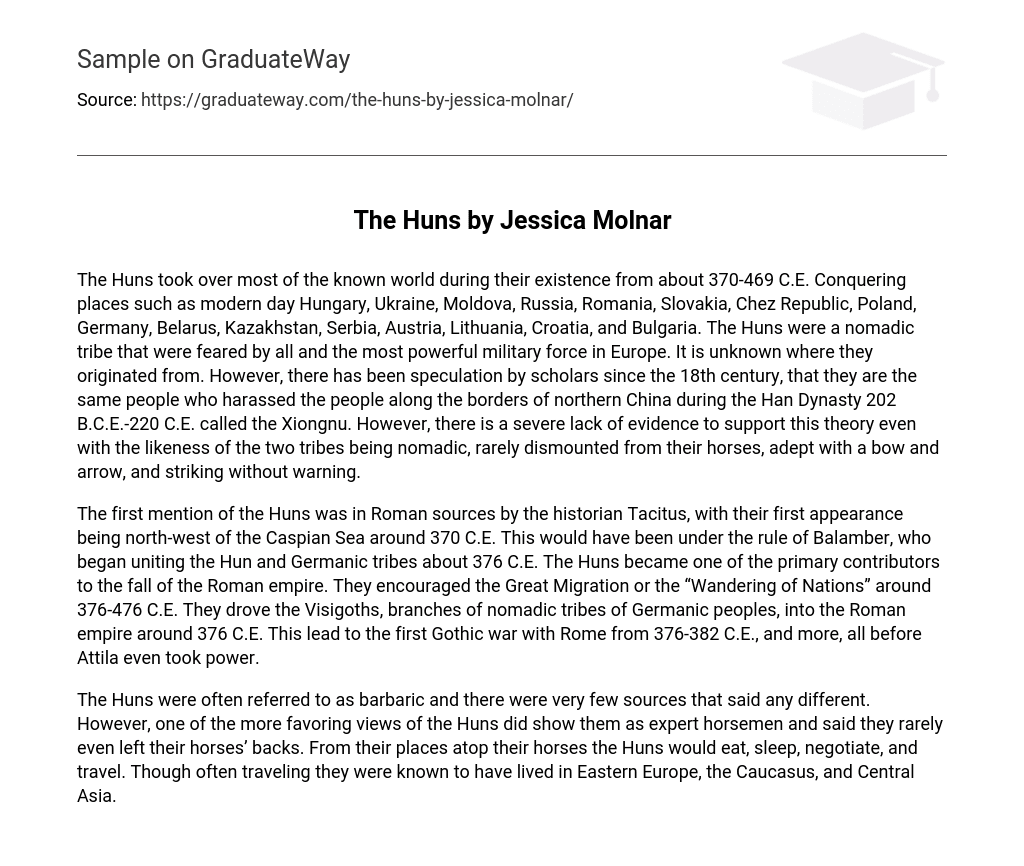The Huns took over most of the known world during their existence from about 370-469 C.E. Conquering places such as modern day Hungary, Ukraine, Moldova, Russia, Romania, Slovakia, Chez Republic, Poland, Germany, Belarus, Kazakhstan, Serbia, Austria, Lithuania, Croatia, and Bulgaria. The Huns were a nomadic tribe that were feared by all and the most powerful military force in Europe. It is unknown where they originated from. However, there has been speculation by scholars since the 18th century, that they are the same people who harassed the people along the borders of northern China during the Han Dynasty 202 B.C.E.-220 C.E. called the Xiongnu. However, there is a severe lack of evidence to support this theory even with the likeness of the two tribes being nomadic, rarely dismounted from their horses, adept with a bow and arrow, and striking without warning.
The first mention of the Huns was in Roman sources by the historian Tacitus, with their first appearance being north-west of the Caspian Sea around 370 C.E. This would have been under the rule of Balamber, who began uniting the Hun and Germanic tribes about 376 C.E. The Huns became one of the primary contributors to the fall of the Roman empire. They encouraged the Great Migration or the “Wandering of Nations” around 376-476 C.E. They drove the Visigoths, branches of nomadic tribes of Germanic peoples, into the Roman empire around 376 C.E. This lead to the first Gothic war with Rome from 376-382 C.E., and more, all before Attila even took power.
The Huns were often referred to as barbaric and there were very few sources that said any different. However, one of the more favoring views of the Huns did show them as expert horsemen and said they rarely even left their horses’ backs. From their places atop their horses the Huns would eat, sleep, negotiate, and travel. Though often traveling they were known to have lived in Eastern Europe, the Caucasus, and Central Asia.





